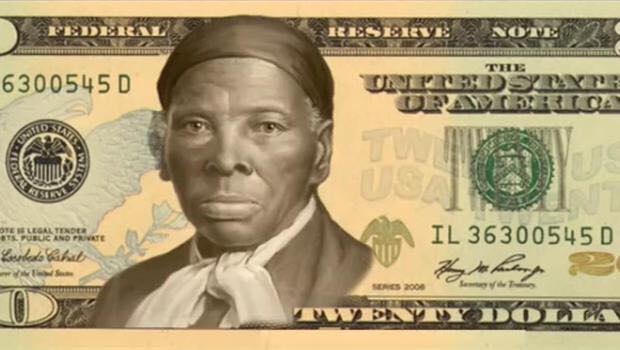In a new and old step at the same time, the administration of US President-elect Joe Biden announced its plan to implement the initiative of former President Barack Obama, placing a picture of "Harriet Tubman" on the US $ 20 bill, and expediting its issuance.
The new currency was supposed to be issued last year, coinciding with the centenary of the 19th amendment, which granted women the right to vote in the United States of America, but the administration of former President Donald Trump suspended the issuance.
Who is "Harriet Tubman", and why all this controversy over her image, and what is the story?
Fighter
Under President Obama, there was an initiative to place the image of slave-freed and anti-slavery of African descent Harriet Tubman on the $ 20 bill, in place of Andrew Jackson, the seventh American president famous for racism, known for his brutality and genocide, and his possession of hundreds of slaves.
A family of slaves
Harriet Tubman was born around 1820 on a farm in Dorchester County, Maryland, to slave parents.
Tubman had 8 brothers and sisters, but the reality of slavery eventually forced many of them to separate and work in various places from a young age.
And she was not immune to it, when she was five years old, she worked as a nanny to a young child and was subjected to constant abuse and torture.
At the age of seven, she worked on a number of farms that she preferred to work at home.
Tubman did not surrender to her fate, and when she reached the age of 12, she began looking and wondering about achieving justice, and at that time she was hit in the head, while working on a cotton farm, and this caused her permanent complications from headache and random sleep for the rest of her life.
Anti-slavery
Tubman managed to escape from slavery on a farm in Maryland at the age of 27, and through the subway she fled north into Pennsylvania.
However, Tubman was not satisfied with the feeling of freedom on her own. She wanted freedom for her family and friends as well.
Soon, she returned to the south, helping relatives to escape the farm by subway.
She returned to Maryland, specifically to the farms located on the East Coast, to bring family members and friends who loved and trusted them, and Tubman announced in the late 1850s that she had rescued between 50 to 60 people during 8 or 9 trips, and gave instructions to about 70 other people who found their way to Freedom on their own.
Chef, nurse and spy
The Fugitive Slave Act of 1850 permitted fugitive and freed slaves in the North to be arrested and enslaved again.
This made Tubman's clandestine work as a captain of a subway train more difficult for 11 years, and forced her to drive slaves north to Canada.
She carried a small pistol with her on liberation missions, to protect against slave hunters, and also to encourage fearful slaves to go ahead rather than return and risk the safety of the rest of the group.
When the Civil War broke out in 1861, she worked as a cook, soldier nurse, and spy for the Union Army against the Confederate Army.
According to the "Washington Post", Tubman was the first woman to lead armed military raids, defeated Confederate outposts, and freed more than 700 slaves in South Carolina.
After the war, she continued her work against slavery and women's rights, was a staunch ballot enthusiast and began to appear in ballot agreements before the Civil War.
Tubman fought for civil and political rights not only for women and minorities, but also for the handicapped and the elderly, and she set up a nursing home for elderly African Americans in New York near her home.
In 1913, Harriet Tubman died and was buried in Fort Hill Cemetery in Auburn, New York, and a military ceremony was held for her in exchange for her military services.
Old initiative and revival
Tubman's life was busy, and in her memory memorials were erected and her name was named to several schools in the United States.
The Obama administration’s plan was to print its image on the $ 20 bill, instead of the seventh US President Andrew Jackson, who is known for his racism against brown-skinned people.
Whereas former President Trump suggested, before his election in 2016, to put her image on the $ 2 bill instead of on the $ 20 bill.
And according to "CNBC" (CNBC), Treasury Secretary in the Trump administration, Stephen Mnuchin, said that the redesign of the $ 20 bill that includes Tubman, and was supposed to be issued in 2020 coinciding with the centenary of women's right to vote, will not be done. Released until 2028.
But the Biden administration announced its intention to expedite the issuance of the $ 20 bill bearing the image of Tubman, in her honor and memorial.
Upon implementation of the decision, Tubman will become the first black person to have his image placed on the US paper currency and the first woman in generations. Martha Washington, the first first lady of the United States of America, preceded her, and her image appeared on a one-dollar coin in the nineties of the nineteenth century.
Before them, Pocahontas appeared in a group photo on a $ 20 bill in the 1960s.

